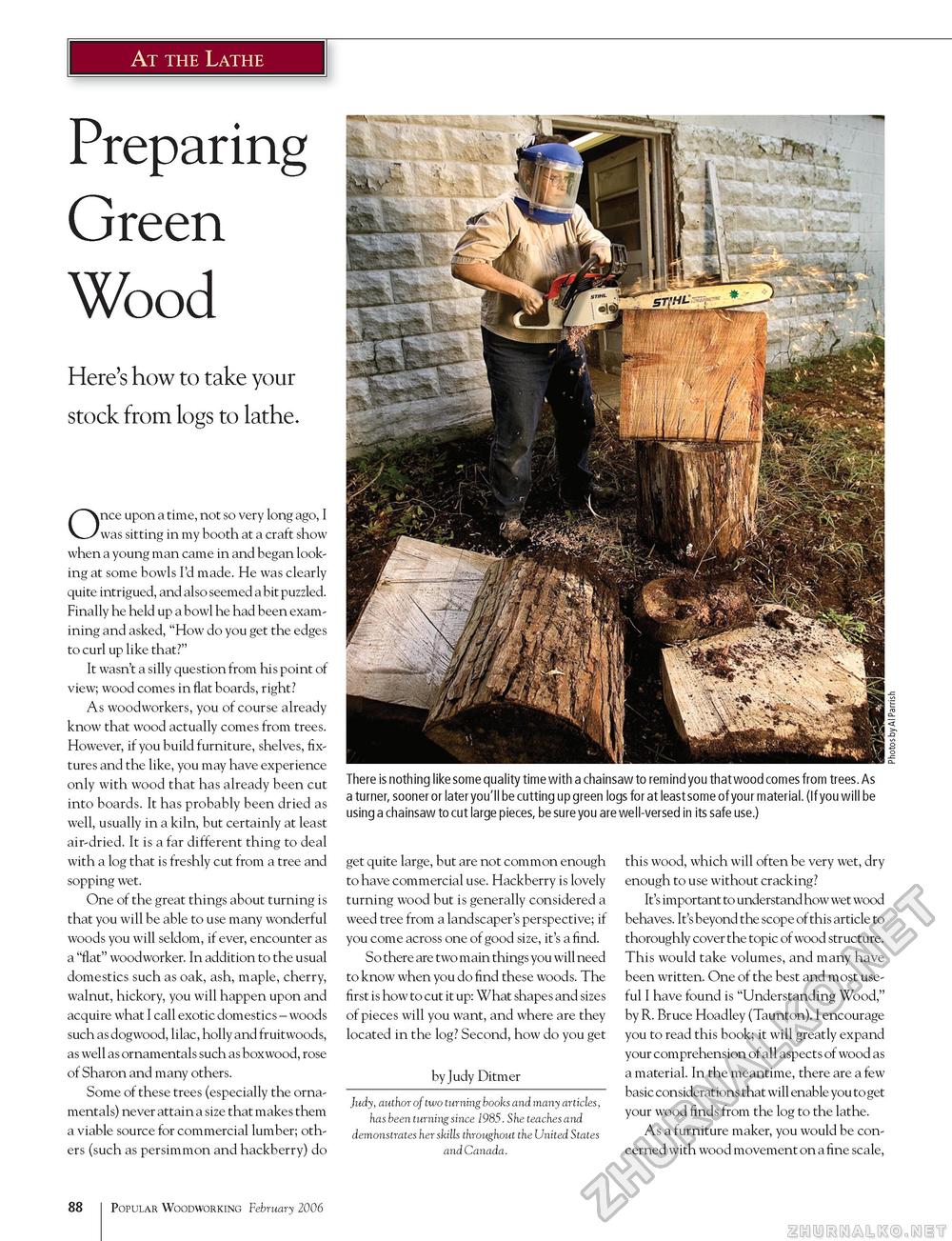Popular Woodworking 2006-02 № 153, страница 87
At the Lathe Preparing Green Wood Here's how to take your stock from logs to lathe. There is nothing like some quality time with a chainsaw to remind you that wood comes from trees. As a turner, sooner or later you'll be cutting up green logs for at least some of your material. (If you will be using a chainsaw to cut large pieces, be sure you are well-versed in its safe use.) Once upon a time, not so very long ago, I was sitting in my booth at a craft show when a young man came in and began looking at some bowls I'd made. He was clearly quite intrigued, and also seemed a bit puzzled. Finally he held up a bowl he had been examining and asked, "How do you get the edges to curl up like that?" It wasn't a silly question from his point of view; wood comes in flat boards, right? As woodworkers, you of course already know that wood actually comes from trees. However, if you build furniture, shelves, fixtures and the like, you may have experience only with wood that has already been cut into boards. It has probably been dried as well, usually in a kiln, but certainly at least air-dried. It is a far different thing to deal with a log that is freshly cut from a tree and sopping wet. One of the great things about turning is that you will be able to use many wonderful woods you will seldom, if ever, encounter as a "flat" woodworker. In addition to the usual domestics such as oak, ash, maple, cherry, walnut, hickory, you will happen upon and acquire what I call exotic domestics - woods such as dogwood, lilac, holly and fruitwoods, as well as ornamentals such as boxwood, rose of Sharon and many others. Some of these trees (especially the ornamentals) never attain a size that makes them a viable source for commercial lumber; others (such as persimmon and hackberry) do get quite large, but are not common enough to have commercial use. Hackberry is lovely turning wood but is generally considered a weed tree from a landscaper's perspective; if you come across one of good size, it's a find. So there are two main things you will need to know when you do find these woods. The first is how to cut it up: What shapes and sizes of pieces will you want, and where are they located in the log? Second, how do you get by Judy Ditmer Judy, author of two turning books and many articles, has been turning since 1985. She teaches and demonstrates her skills throughout the United States and Canada. this wood, which will often be very wet, dry enough to use without cracking? It's important to understand how wet wood behaves. It's beyond the scope of this article to thoroughly cover the topic of wood structure. This would take volumes, and many have been written. One of the best and most useful I have found is "Understanding Wood," by R. Bruce Hoadley (Taunton). I encourage you to read this book; it will greatly expand your comprehension of all aspects of wood as a material. In the meantime, there are a few basic considerations that will enable you to get your wood finds from the log to the lathe. As a furniture maker, you would be concerned with wood movement on a fine scale, 88 Popular Woodworking February 2006 |








